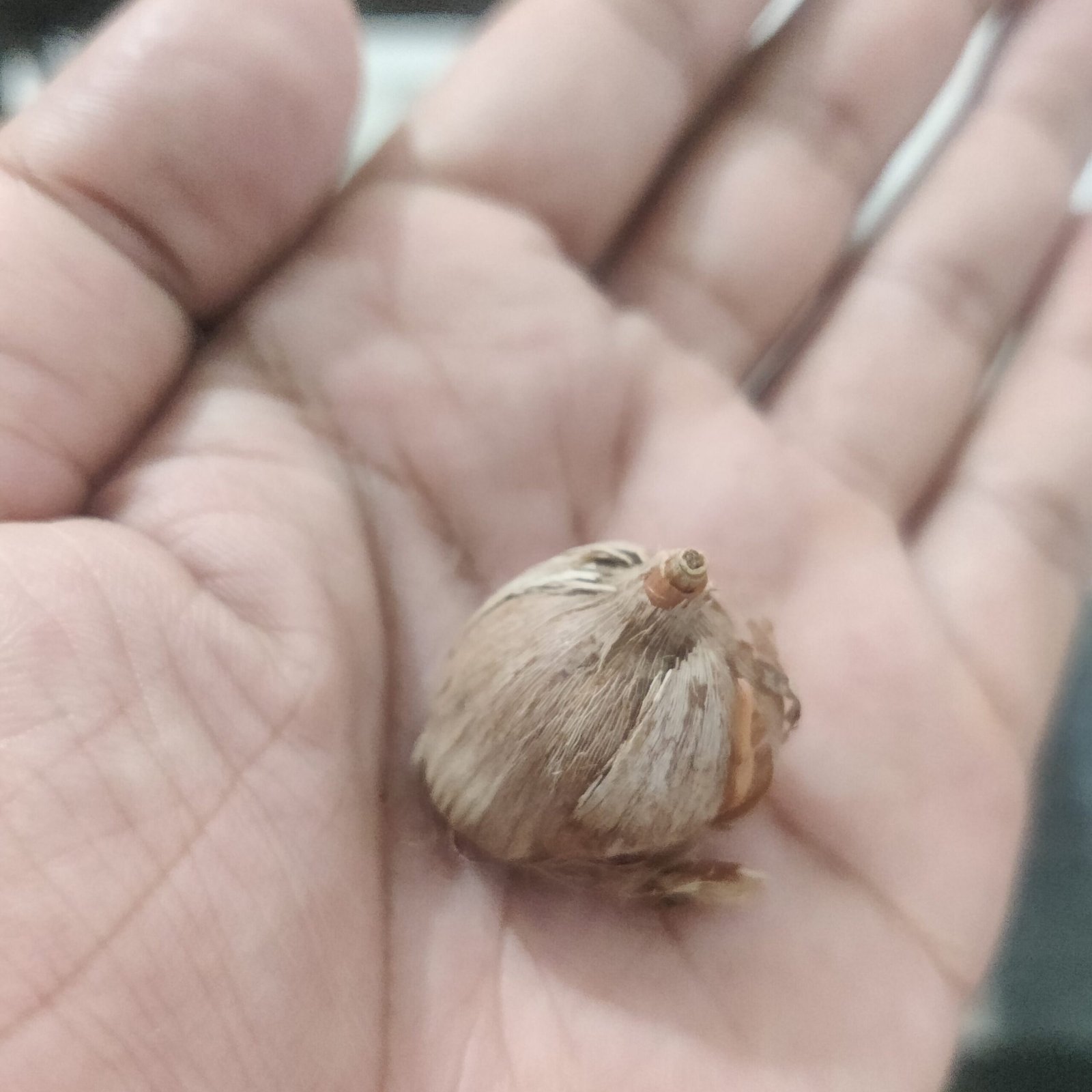Saffron bulbs, also known as corms, are the underground storage organs of the saffron crocus plant (Crocus sativus). These bulbs play a crucial role in the cultivation and propagation of saffron, the world’s most expensive spice.
Saffron bulbs are characterized by their small, rounded shape and reddish-brown outer layer. They contain all the necessary nutrients and energy reserves required for the saffron crocus to sprout and produce flowers. Each bulb typically produces multiple flowers, each with three bright crimson stigmas, which are the sought-after saffron threads.
The cultivation of saffron begins with the planting of these bulbs in well-drained soil during late summer or early autumn. Over the dormant winter months, the bulbs develop roots and prepare for growth. With the arrival of spring, the bulbs send up shoots that develop into slender green leaves and eventually produce delicate purple flowers.

Harvesting saffron involves carefully plucking the flowers by hand and separating the valuable stigmas from the rest of the flower. These stigmas are then dried to preserve their flavor, aroma, and vibrant color, ready to be used as a prized spice in culinary, medicinal, and cosmetic applications.
Overall, saffron bulbs are the foundation of saffron cultivation, representing the beginning of a journey that culminates in the harvesting of nature’s golden treasure.